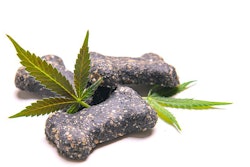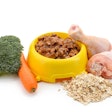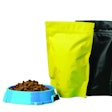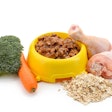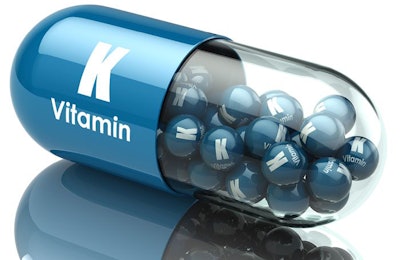
The Association of American Feed Control Officials (AAFCO) Cat Food Nutrient Profiles require that a source of vitamin K be included in any cat food that contains more than 25% fish and is intended to be "complete and balanced" for any or all life stages under the Profiles. Also, there are a number of nutritional circumstances where the inclusion of vitamin K in other cat foods, dog foods and specialty pet foods would be prudent. This has not been an issue for decades. However, that situation has recently changed.
Recent troubles with MSBC
The synthetic analogs menadione and menadione sodium bisulfite complex (MSBC) have been tacitly allowed as "vitamin K active substances" in pet foods for many years. As I understand it, MSBC would be the more stable, hence preferred of the two. Regardless, they are both "prior sanctioned" by the U.S. Food and Drug Administration (FDA), albeit expressly only for use in poultry feeds.
Still, FDA notes on its website that these substances are widely used in feeds for other species, including pet foods. Thus, despite lacking formal approval, this reference to their use for feeds other than for poultry without explicit objection has allowed regulators to exercise enforcement discretion and tolerate the unfettered use of MSBC in pet foods.
Recently, though, at least one state feed control official has taken action against any pet product containing MSBC. This is because the listing of MSBC in the AAFCO Official Publication makes reference to poultry only. As the state interprets its animal feed regulations, any other use is strictly prohibited. Urging of the state to exercise enforcement discretion in this instance, or other quick regulatory fixes, such as amendment to the AAFCO listing, appear to be at a stalemate.
Solving the problem
What would be required to move forward, it seems, would be for an interested party to file a Generally Recognized As Safe (GRAS) Notification for MSBC with FDA to provide for this broader use. Of course, that process can take considerable time (years) and resources. Also, meeting the GRAS criteria would require sufficient documentation in the published literature to establish safety for this "new" use.
Honestly, that could be a problem for MSBC. Except for some concerns expressed on consumer advocate websites as to its purported adverse effects on pets, MSBC has been very widely used in all sorts of animal feeds for decades without any discernible safety issues when used in accordance with good feeding practices. Lacking a reasonable incentive to conduct formal safety trials, very little would be expected to be found in the scientific literature on the subject.
What about other sources of vitamin K? There are a few other menadione-based ingredients available, but these are regulated as food additives by FDA, which make the exercise of enforcement discretion as it pertains to use in pet food even more difficult. Hypothetically, natural sources of vitamin K such as spinach or kale could be added to meet regulatory or nutritional requirements. However, ensuring adequate inclusion rates to reliably meet vitamin K needs would likely prove difficult. Also, in consideration of the difficulties with formulation and processing of these types of ingredients, and with concern over potential adverse effects such as reduction in palatability and inclusion of potentially unsafe substances such as oxalates, the feasibility of this approach is questionable at best.
Another potential alternative stems from a review paper published in 2018 in the Journal of the American Veterinary Medical Association that concludes that phylloquinone (vitamin K1) is GRAS for use in dog and cat foods. Coincidentally, I am one of the authors, though the paper was published well before this present matter became an issue. Phylloquinone is produced commercially by synthetic means but is chemically identical to naturally occurring vitamin K in leafy green vegetables.
This is very different from menadione, which notwithstanding its frequent identification as "vitamin K3" is not really vitamin K per se but rather an analog that requires further transformation in the body to be functional. Menadione-based compounds are not permitted in foods for human consumption. Phylloquinone, on the other hand, is not only allowed but in fact is required for use in infant formulas in the United States. FDA considers this use of phylloquinone to be "safe and suitable." To me, the same status should apply to pet foods.
In any event, a swift resolution to this matter is needed. In the interim, any fish-based cat food would need to substantiate nutritional adequacy via an appropriate AAFCO feeding trial, or all claims to be "complete and balanced" would need to be removed. Still, this remedy does not address all the other potential nutritional issues (including possible bleeding disorders) stemming from consumption of pet foods lacking a suitable source of vitamin K when needed.
Briefly: Top 5 takeaways
- Vitamin K has been included in pet food formulations with no issues for some time, but recently the situation has changed.
- At least one state feed control official has taken action against any pet product containing MSBC, allowed as a “vitamin K active substance” for many years.
- To move forward, an interested party would need to file a GRAS Notification for MSBC with FDA to officially provide for its use in pet food (rather than just in poultry feed).
- Vitamin K is an important ingredient, necessitating a swift resolution to this matter.
- To find the paper regarding phylloquinone in pet food: Delaney SJ, Dzanis DA. Safety of vitamin K1 and its use in pet foods. JAVMA 252(5):537-542, 2018. https://bit.ly/2wFdOKt.




